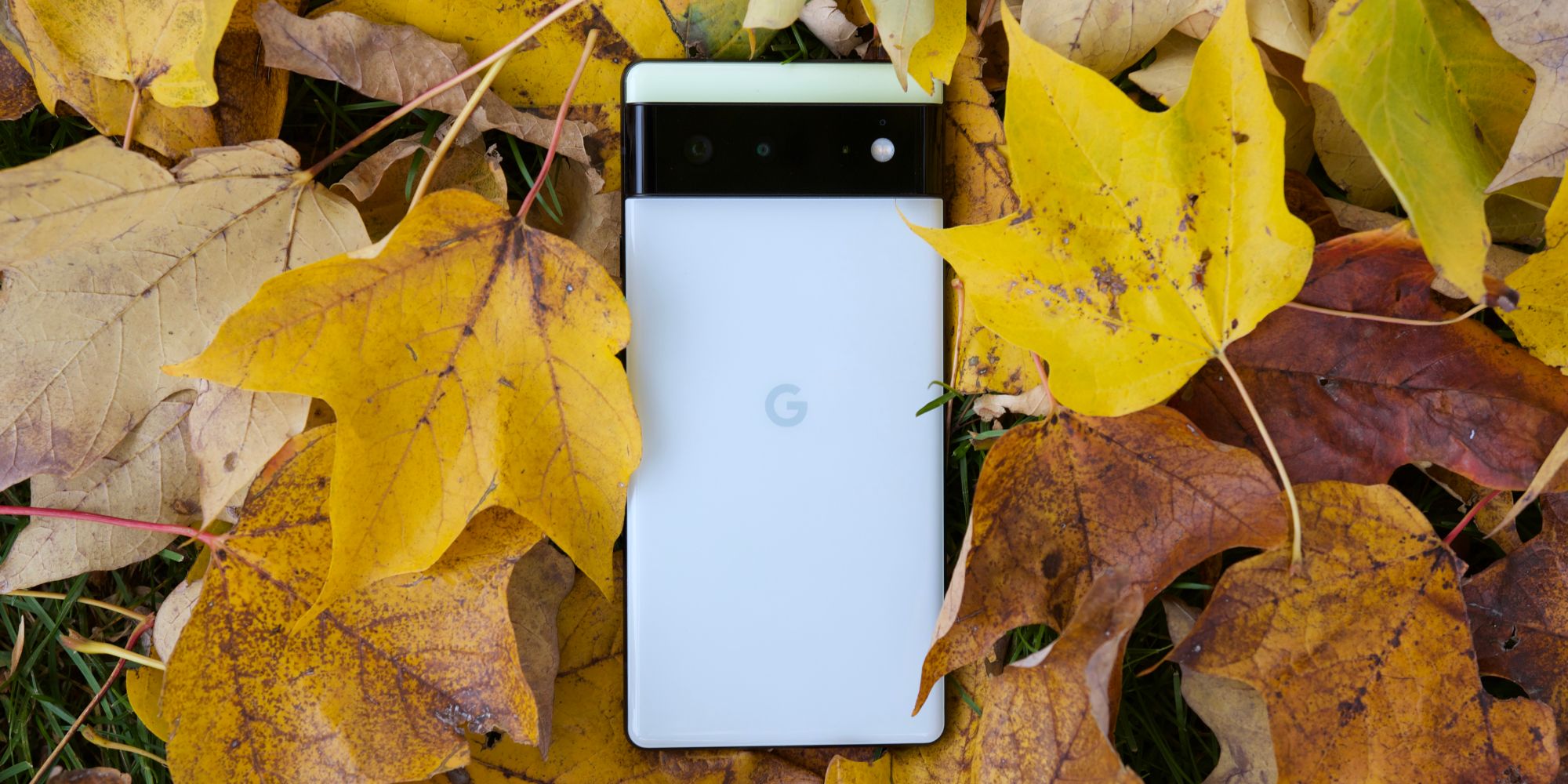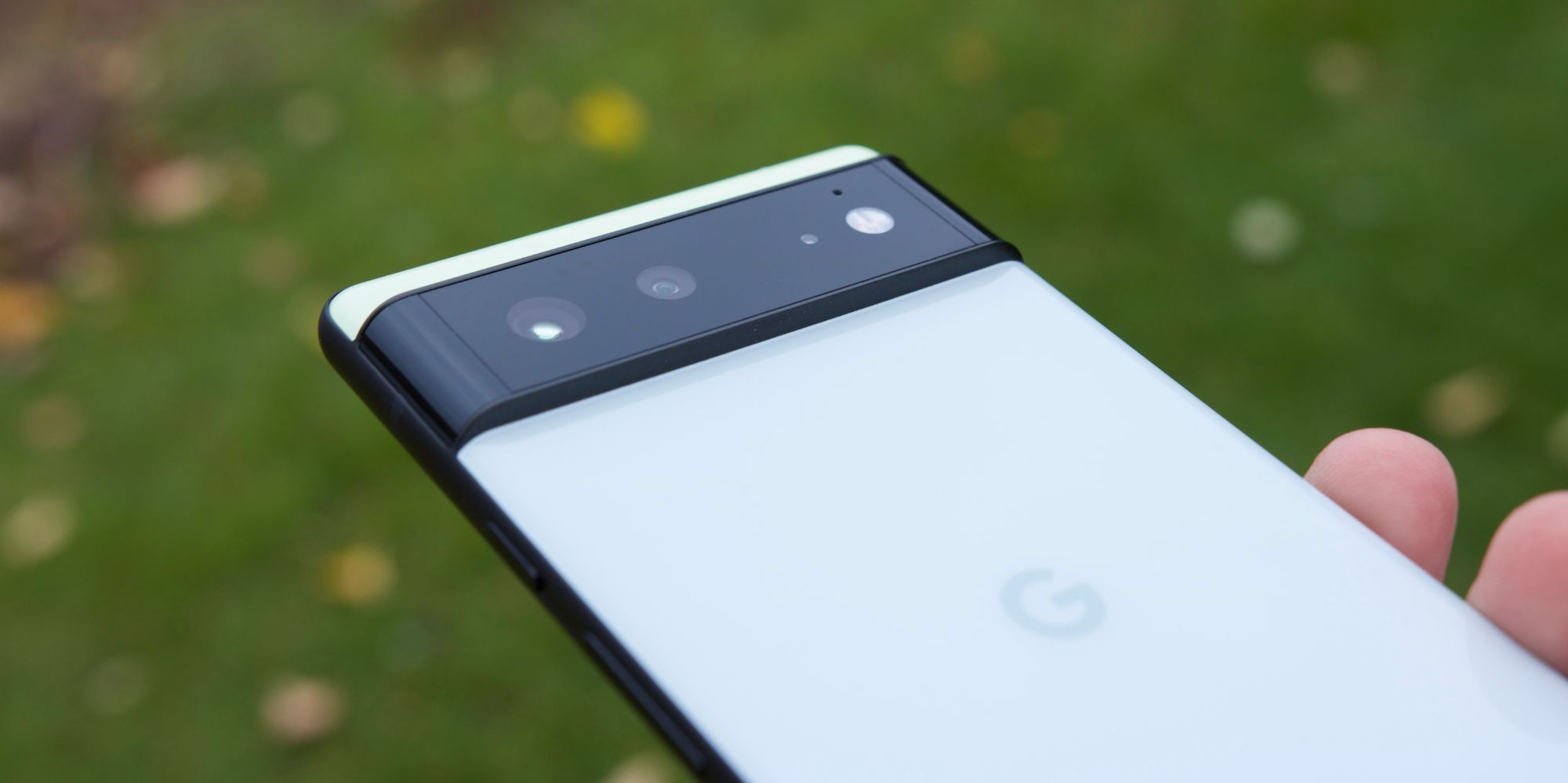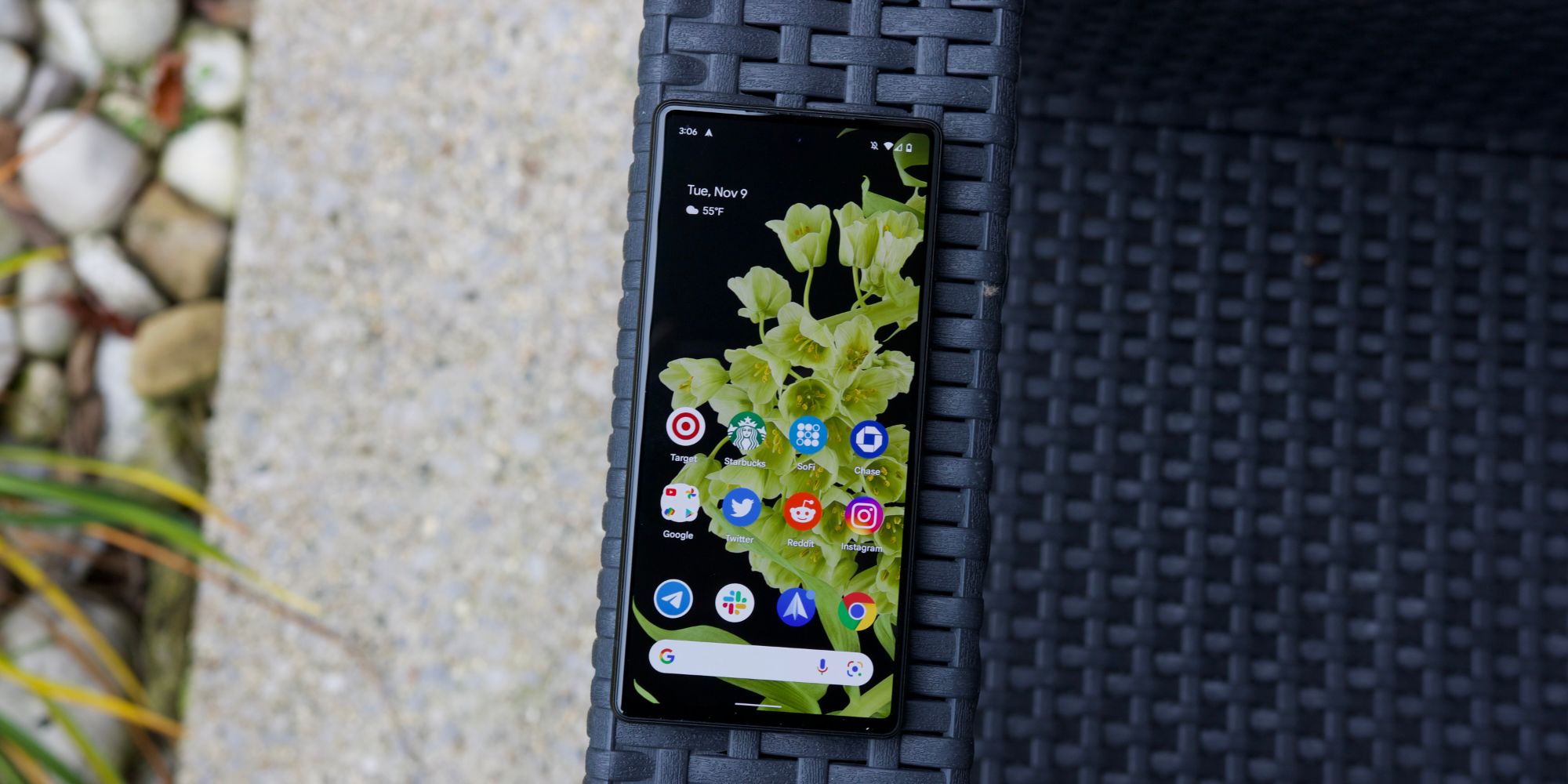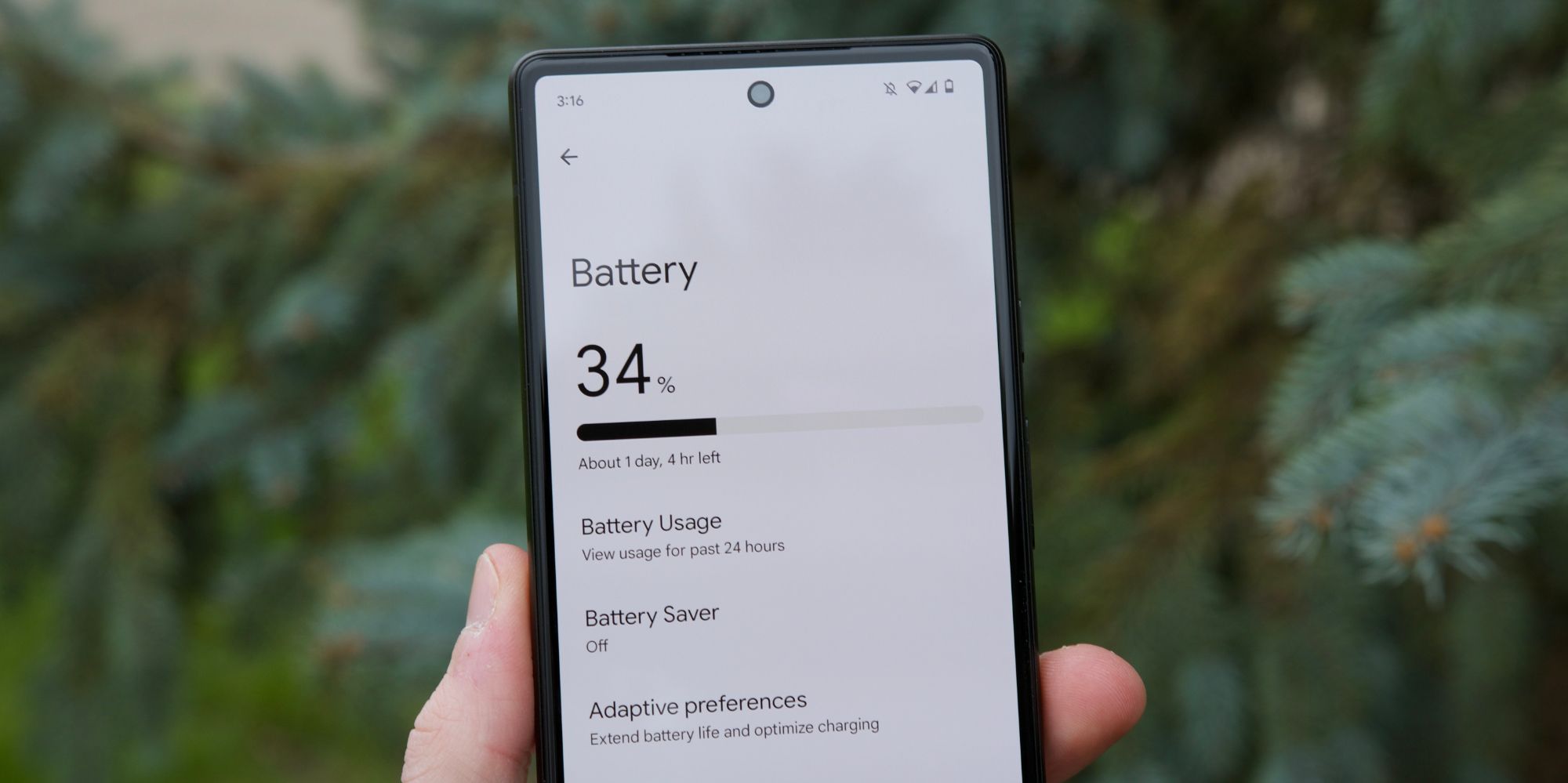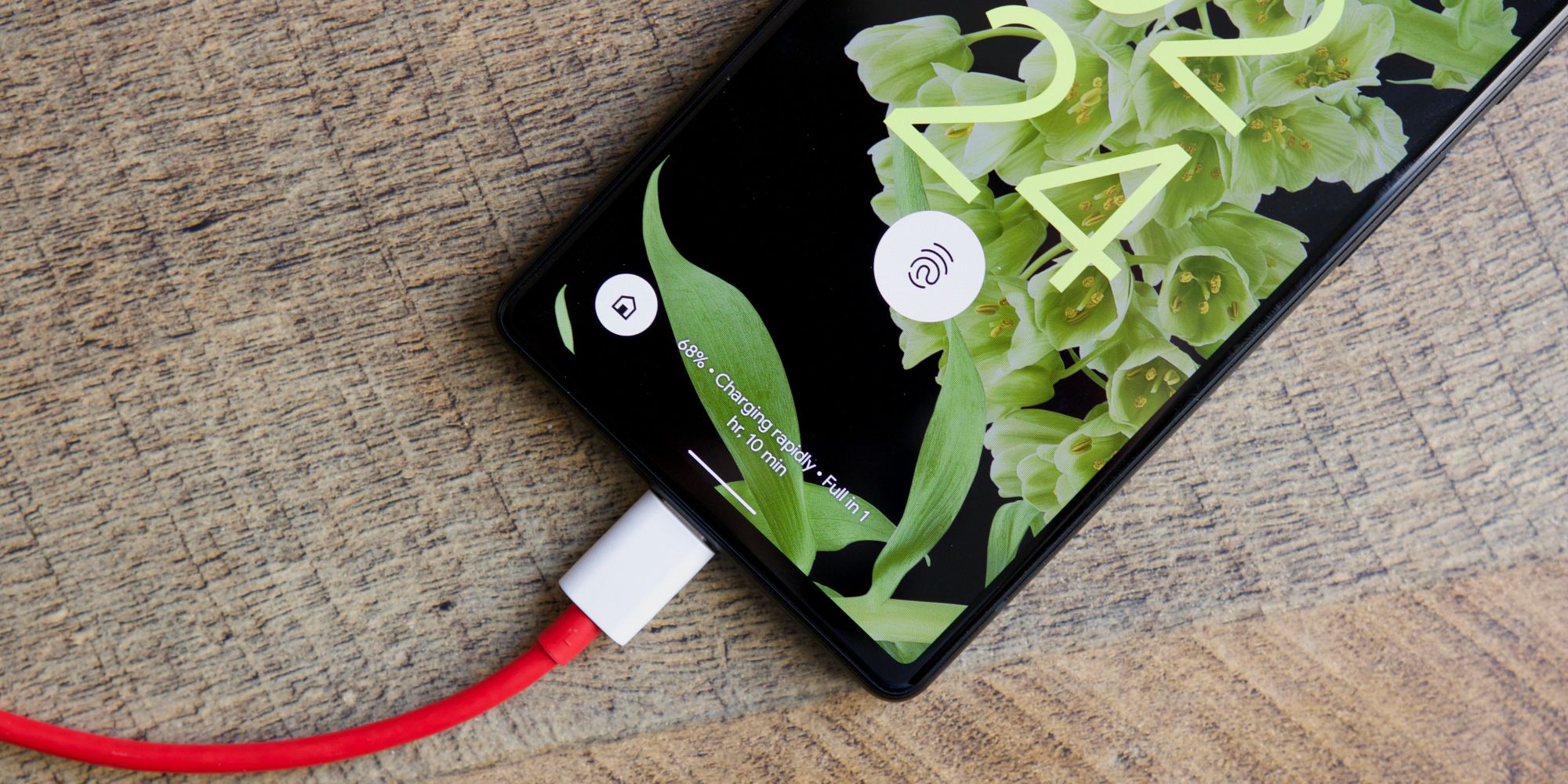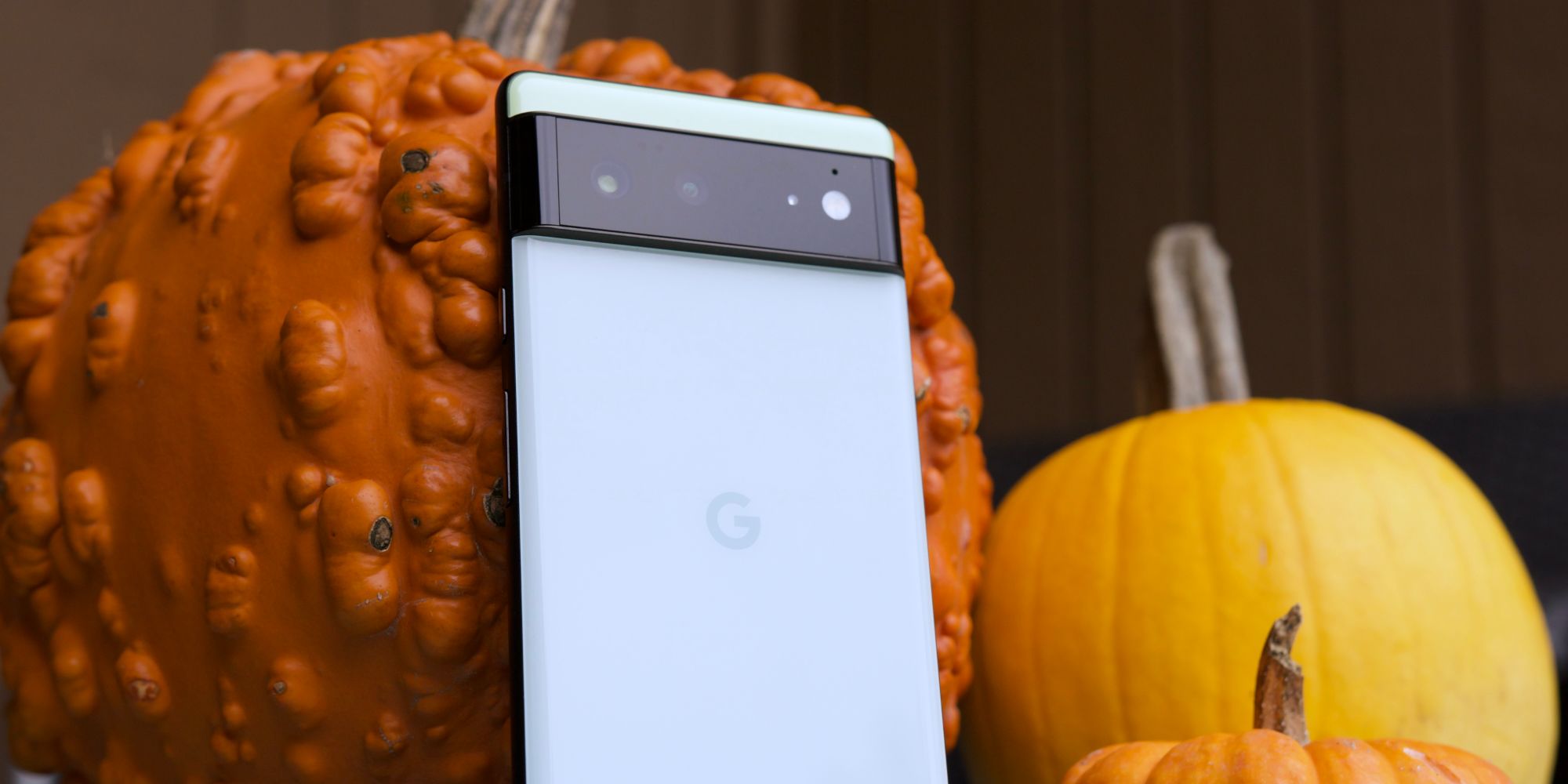A lot of excellent smartphones launched in 2021, but none of them match the sheer power, excitement, and value that Google concocted with the Pixel 6. Considering the bumpy history of the Pixel series up until this point, writing a sentence like that feels like a long time coming. Google's made valiant attempts at breaking into the smartphone market year after year since 2016. Every Pixel, from the original model to the Pixel 5, has brought something interesting to the table — but be it lacking specs or a nonexistent marketing campaign — they've never found mainstream success.
The Pixel 6 series is how Google thinks it's going to change that. It has two new phones (the Pixel 6 and Pixel 6 Pro) with radical designs, custom-made silicon, and the most aggressive marketing strategy we've ever seen. And it's a recipe that's paying off. We already reviewed the flagship Pixel 6 Pro and hailed it as 'the best Pixel there's ever been.' Google's answer to the iPhone 13 Pro and Galaxy S21 Ultra is big, powerful, capable, and a shockingly good deal at $899.
But what if there was a phone that offered 90 percent of the Pixel 6 Pro experience for $300 less? That's Google's marketing pitch for the regular Pixel 6. It has the Pro's design, Google Tensor chipset, and the same outstanding cameras — all for just $599. It's something that sounds too good to be true. By some magical grace, Google pulled it off. The Pro model is still the 'best' Pixel from a technical perspective, but for the person who wants a flagship smartphone experience without paying flagship prices, there's no better option than the Pixel 6.
Everything That's Amazing About The Pixel 6
Almost all of the praises we gave to the Pixel 6 Pro carry over seamlessly to the baseline Pixel 6. That's seen immediately with the phone's design. Like its larger sibling, the Pixel 6 has a two-tone glass back with a monstrous camera bar between the contrasting colors. It's an aesthetic that takes some warming up to, but after living with the 6 and 6 Pro for about a month now, I've come around to liking it. It's unique, distinctive, and the size of the camera bar means the Pixel 6 is one of the few phones that doesn't rattle when used on a table.
What's interesting is that the regular Pixel 6 actually has a slightly better design than its Pro sibling. The frame, for example, has a sleek matte finish instead of the glossy one on the 6 Pro. The Pixel 6 also doesn't have the same rattling camera issue as the 6 Pro, nor does it have the tacky strip of plastic on the top frame. That latter point is because most versions of the Pixel 6 in the U.S. don't support mmWave 5G, but it's honestly a trade-off I'm willing to make.
Something else I love about the Pixel 6 over the 6 Pro is the display. While both phones are larger than I'd personally prefer, the Pixel 6 is much more comfortable in daily use. Not only is the screen slightly smaller at 6.4 inches instead of 6.7, but the regular Pixel 6 opts for a flat display instead of the Pro's curved edges. This means there's zero chance of accidental touches, there's no weird shadow on the edge of the screen, and something about the squared edges with slightly larger bezels looks lovely. It also helps that the technical aspects of the Pixel 6's display are quite strong. The phone has an OLED panel, 2400 x 1080 Full HD+ resolution, and a refresh rate that goes up to 90Hz. It's not breaking any new ground or setting industry standards, but it's an incredibly solid screen with which I never had any issues. It's bright, colorful, responsive, and more than good enough for what this price tag commands.
Another area where the Pixel 6 shines is with its camera. There are two sensors on the back, including a 50MP primary sensor and a 12MP ultra-wide one. What I said about the camera in my Pixel 6 Pro review mostly holds true for the Pixel 6:
Photos have an excellent amount of detail, colors are vibrant without being too saturated, and low-light performance is the best it's ever been. What's been even more noticeable, though, is the added depth you get thanks to the larger sensor. Almost every photo with a clear subject is joined by a naturally blurred background. The effect isn't always immediately noticeable, but it creates much more professional-looking images than what any past Pixel's been capable of.
The one significant difference is that the Pixel 6 doesn't have the 3x telephoto camera of its larger sibling. That can be a bummer in certain situations, but the 50MP primary camera is so good that it mostly makes up for its absence. Furthermore, the Pixel 6 retains all of the same software features that make the Pro stand out. From Magic Eraser, Face Unblur, Action Pan, or Real Tone, there's so much to dig into with the Pixel 6 camera that you won't find on any other smartphone. It's that combination of expanded features, ease-of-use, and outstanding results that make shooting with the Pixel 6 such a joy. Whether it be a challenging night photo or a relatively simple subject, the Pixel 6 usually finds a way to make it look incredible. Sure, it can be heavy-handed with the HDR processing at times, but this is easily one of my favorite phones to shoot with — second only to the iPhone 13 Pro. For a $599 smartphone, that should be enough to sell you on it right there.
The Pixel 6 keeps up its flagship appearances with its Google Tensor chip — the same bit of silicon inside the Pixel 6 Pro. Even though the Pixel 6 has slightly less RAM (8GB instead of 12GB), it still manages to be a performance beast. Apps open instantly, graphically intense games aren't a problem, and multitasking runs surprisingly well even with the reduced memory. The phone can get a little hot when you're really pushing it, but lacking performance is never a concern when using the Pixel 6.
Tensor also shows its prowess with how it expands on Google's AI capabilities. As I mentioned in our Pixel 6 Pro review, one of the best examples of this is Assistant voice typing. It's an upgraded version of speech-to-text that's wickedly fast, works entirely offline, and understands natural speaking habits. Assistant voice typing can automatically add commas, question marks, and more by listening to the way you're talking. And that's just one example of what Google Tensor is capable of. The chipset also enables Live Translate to automatically translate different languages in most messaging apps, and certain Assistant commands can be said without a 'Hey Google' prompt before them. Not everyone will use these things every day, but in situations where they are helpful, it makes you glad to carry a Pixel 6 over any other smartphone.
And, last but certainly not least, there's battery life. The Google Pixel 6 is equipped with a 4,614 mAh battery and has the same promise of "beyond 24-hour battery life" as the Pixel 6 Pro. For the most part, that claim holds true. The Pixel 6 usually cranks out between 4 and 5 hours of screen on time while regularly using it throughout the day. It also sips battery wonderfully while not in use – using just 54 percent of its battery over the course of nearly 45 hours with 1 hour and 45 minutes of screen on time. Battery performance seems to vary considerably for different people with the phone, but at least in our testing, the Pixel 6 more than proved its worth.
Things The Pixel 6 Could Improve On
As much fun as the Pixel 6 has been, that's not to say it comes without a few quirks. Right off the bat, this is one of the slipperiest phones I've used all year. The two-tone glass back looks fantastic, but the slick coating means the Pixel 6 often slides right off seemingly flat surfaces. More than once I've had the phone sitting on the arm of my couch, only to hear it fall to the floor below all on its own. If you're picking up the Pixel 6 for yourself, this is a phone that almost demands a case and screen protector.
We should also mention the charging controversy around the Pixel 6. Google advertises the phone as having 30W charging and getting from 0 - 50 percent in 30 minutes. While the latter point is accurate, an in-depth test has since revealed that the Pixel 6 never actually goes up to the advertised 30W. Instead, it maxes out at 22W and aggressively throttles speeds even lower as the phone fills up — resulting in it taking considerably longer to charge than its competition. This has been evident in our own testing as well. Plugging the Pixel 6 into a 30W charger with 46 percent battery remaining, the charging pop-up says it'll get to 100 percent in 1 hour and 25 minutes. The screen may say it's 'charging rapidly,' but that's rarely the case with the Pixel 6.
All of the other issues with the Pixel 6 revolve around its software. It's one of the first phones to ship with Android 12 and Google's all-new Material You interface. As stated in the Pixel 6 Pro review, Android 12 is an outstanding bit of software. It's snappy, has gorgeous animations, and the revamped UI with its focus on personalization is one of the best things to happen to Android in years. Unfortunately, all of those drastic changes also result in numerous rough edges. The notification panel often shows notifications on top of the current app instead of a white background, and widgets/apps don't always abide by the current device theme. One particularly annoying bug is a 'ghost calling' issue that appears to be fairly widespread among Pixel 6 & 6 Pro owners. While out walking with the phone in my pocket one day, the Pixel 6 decided to call my aunt out of nowhere. It did this despite the screen being locked, me never asking the Assistant to do so, and having never called my aunt with the SIM card in the Pixel 6. Sure enough, however, the Google Assistant activity revealed that the Pixel 6 thought it heard me say, 'Hey Google, call Jennifer.' It isn't easy to gauge precisely how widespread this is, but numerous folks on Twitter and Reddit have reported similar activity.
While none of these things completely ruin the Pixel 6 experience, they're constant reminders that Android 12 probably could have used another month or so of patching. It's understandable that new bugs would arise from such a dramatic update, but that understanding doesn't make these quirks any less annoying at times. On the plus side, there's no reason why Google shouldn't be able to fix all of these things soon. The company has a decent track record for patching user-reported bugs, and the promised three years of OS upgrades + five years of security patches mean those updates will keep rolling it for a while to come.
The New Android Phone For Everyone
If there's one way to best summarize my time with the Pixel 6, it's this: Whenever I'm using the phone, it never feels like I'm using something that's anything less than a top-of-the-line flagship. Whether it be the design, display, cameras, performance, or battery life — virtually everything about the Pixel 6 ranges from good to fantastic. It has a premium feel, capable specs, and combines all of those things into one of the most engaging Android phones I've ever used.
That's enough praise right there to recommend the Pixel 6 at virtually any price. The fact that you get all of that for just $599 makes the Pixel 6 a no-brainer. Unless you're working with a very limited budget or have zero tolerance for software bugs, it's almost impossible to recommend another phone over the Pixel 6 right now — even the Pixel 6 Pro. Do I miss having its 120Hz display and telephoto camera? Certainly. But if I were going out to spend my own money on either phone, I'd happily omit those couple of features to keep an extra $300 in my wallet.
It all comes back to what I said at the top of the review. The Pixel 6 Pro is technically the best Pixel Google's ever created. The Pixel 6, however, is the best value Pixel there's ever been. I'd also argue it's the best smartphone value regardless of brand. It's that good. There will never be a 'perfect' smartphone, but with this combination of specs, features, and pricing, Google's gotten closer than any other company in recent years.
Source: Google

